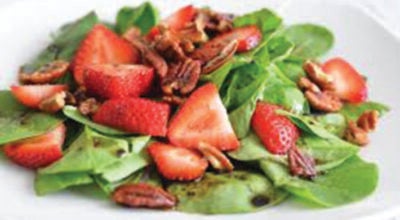The Literary Corner: Renegade Writer’s Guild
Published 1:32 am Friday, September 30, 2022
|
Getting your Trinity Audio player ready...
|
Pearson Duel
By Marie Craig
“The friends of the parties agree to the following Viz. Distance ten paces. To stand still until the words make ready fire. The pistols until the word fire, to be held pointing above the head or below the feet of the adversary. Time, to morrow morning 8 or 9 o’clock. A snap to be accounted a fire. The word fire to follow in 1. 2. 3. or 4 seconds after the word make ready. The parties shall not reserve fire, but fire immediately on receiving the word.”
These are the exact written words which preceded a duel between Joseph Pearson and John George Jackson on Dec. 4, 1809 in Bladensburg, Md., about seven miles northeast of Washington City, as Washington, D.C. was called then. Joseph was a member of the Federalist Party and opposed war. His opponent was a member of the opposite party, and they did not agree on many things. They were both members of the United States Congress and had argued ever since Pearson had joined Congress at the beginning of that year. The duel had been challenged six months before, but had been delayed as the media encouraged and exaggerated it. Pearson was from Rowan County as it was named then. The location is described currently as near Cooleemee, Davie County, North Carolina. (Davie County was created from the upper part of Rowan County in 1836.) Pearson came from a prominent family of lawyers, and state and federal representatives in government. His brother Jesse A. had also fought a duel.
The other man, John George Jackson, was from Virginia. In addition to these two opponents, there was a second and a doctor for each of them. Pearson’s second was Major James Stephenson from Virginia. A second in a duel was a good friend who ensured that the duel was carried out under honorable conditions, on a proper field of honor, and with equally deadly weapons.
When they first fired, neither man was hit. Protocol at the time said that they could fire again. The result of the second shots was that Pearson was not hit, but Jackson was wounded in the side. This was not fatal, but was a chronic pain to him the rest of his life.
Another duel that almost happened was between Salisbury residents, Judge David Franklin Caldwell (1791-1867) and Colonel Charles Frederick Fisher Sr. (1790-1849). They both served in representing Rowan County in Raleigh. Their proposed duel didn’t happen because they couldn’t agree whether to use pistols or swords. It’s a good thing it didn’t, for several reasons. Judge Caldwell’s daughter married Colonel Fisher’s son. From this marriage came Frances Christine Fisher, who wrote 40-50 novels under the pen name Christian Reid. Col. Fisher’s son was killed in the Civil War; Fort Fisher was named for him.
Advance Ties
By Gaye Hoots
Recently Brenda Spry Burton passed away after a long illness. My memories of her go back to the first grade when so many of us enrolled that Mrs. Shermer taught an entire class and Miss Hartman taught a group of halves first and second-grade students. We were the last of the baby boomers.
Brenda lived beside Katie Etchinson, who also started school that year. Charles Markland, Janine Vogler, and Carol Green were in our class and lived in the heart of Advance. Eddie Myers, William Waller, Jimmy Cline, and I rode the bus route that included Peoples Creek Road.
When Brenda was a young mother, she lived behind my mother-in-law, and I saw her and her sons frequently. Her brothers worked for my dad on the farm when they were young, and Doug was just ahead of us in school.
For years we lost touch with each other, but my mother bought the home beside Mildred, Brenda’s sister, and Brenda had married Kenny Burton, and they moved across the street from Mildred. When Mom struggled to live independently and had health problems, Mildred called her every morning to check on her and often brought food and visited. Eventually, she started handing the food to Mom through her bedroom window, so she did not have to carry it back through the house. She was the one to alert Faye when Mom had a stroke.
When I moved into the same house after Mom died, Mildred invited me for meals, and I took her to visit Betty Potts at Salemtown. Mom had kept Tracy Spry, Doug’s daughter when she was preschool age, so we remain close also.
A few weeks ago, I sorted through pictures belonging to Roy, including a photo of Norman Spry wearing an Advance Motorcycle Club shirt. Roy was also a member; his mother and Brenda’s mom were close friends.
A more recent memory of Brenda was of her coming to my home with the motorist who hit my great granddaughter’s little poodle to tell me it had been killed. Brenda had a miniature poodle that I often saw her walking until her health deteriorated.
The members of the Spry family that I knew best were Mildred, Doug, his wife Joan, and Brenda. They had a sense of humor like my dad’s and were fun to be around. Mildred told me of Brenda’s birth and that her mom had washed a load of clothes in an outside washpot and hung them on the clothesline before announcing that the baby was coming. She sent Mildred to fetch Mr. Spry to bring the doctor, and when the doctor arrived, Mildred took the kids to a tobacco barn to stay until the baby arrived. That was a generation of resilient people.
Kenny looked after Brenda himself, and with the end-of-life care Trellis provided, was able to let her remain in their home. Caretaking had to be difficult as Kenny had health issues of his own. Brenda lived across the road from the property where she was born and in sight of her church. She was within a half mile of Shady Grove School, where we attended for eight years. She had lived away from Advance for periods but had truly come home to Advance, as had Kenny. He was born a few miles from their home too.
Queen Anne’s Lace
Julie Terry Cartner
Tatiana hurried across the field, late once again, her mother’s dire warning reverberating through her brain. “Don’t you dare be late. The king will be displeased and will not choose you for his wife.” Tendrils of fabric, ribbons and thread trailed behind her, falling out of her pockets, her apron, and even her hair.
“Why, oh why am I like this?” she chastised herself. “I’m always late, disorganized, and careless with my things, just like Mother always says.”
Just then her friends caught up with her, the detritus of her pockets spilling out of their hands. “Here you go Ana; you dropped these.” One by one, they helped her get organized.
“You’re such good friends,” Tatiana replied. “What would I do without you?” She said as she re-filled her pockets with her treasures.
“Us?” her friends responded. “Us? We do nothing. You’re the good friend.”
“Last week you helped me babysit,” said Merry, a diminutive sprite.
“And you stayed with my grandmother so I could go to my sister’s recital,” reminded Fiona.
“Don’t forget when you took care of my sick dog,” added Jason. “I didn’t think he was going to live, but now he’s fine.”
“Yeah, Ana,” several others chimed in. “You always take care of us. You might be disorganized but we know you love us, and we love you.”
Smiling, Tatiana thanked her friends, wishing her mother would be so understanding. She had spent the morning in her sewing room, working on a project. She combined threads with knots and loops to make a beautiful, lacy design. As usual, she’d gotten so immersed in what she was doing that she lost all concept of time. And now, she was in trouble, again.
Her friends dispersed into the crowd, as Tatiana wished she could, but as part of the royal entourage, she couldn’t. The coronation ceremony was about to start, and her mother, frowning in anger, motioned her forward. She slid into place hoping the new king hadn’t seen her tardy arrival. Unfortunately, he had.
At the conclusion, the fairies welcomed their new king. Tatiana hung back, hoping most of the crowd would disperse before she was chastised. Finally, she stepped forward to curtsy, but, to her absolute horror, she saw a piece of her handiwork fall out of her pocket and land at the king’s feet. Stooping to pick it up, the king examined the scrap.
Expecting chastisement, Tatiana was shocked to hear him exclaim, “This is exquisite. Where did you find this?”
With a fearful look at her grim-faced mother, Tatiana replied honestly, “I made it, your Majesty. I was looking at the lovely white flowers in the fields and wanted to re-create them.”
Intrigued, the king asked for more information, and Tatiana responded. “I like to make things. One day I was knotting and looping threads, and I liked the lacy, flowerlike pattern it created, like those in the fields. So, I started making lacework for my dresses and for my friends’ clothes.” Under the king’s questioning, she told more of her work, and of herself.
The king, enchanted with this young fairy woman, declared: “I choose this woman, Tatiana, to be my queen. Her artwork will be called tatting, and she will, henceforth, be known as Queen Ana, my bride. The flowers that she has so carefully replicated will, now and forevermore, be known as Queen Anne’s Lace.
*Legend says Queen Anne’s Lace was named after Queen Anne II of England, an expert lace maker. She pricked herself while making her lace, and a drop of blood landed in the center of the flower, leaving a dark purple spot. The flower represents beauty, and women added the flowers to their bath to attract love. It also symbolizes safety, sanctuary and a happy home. Also known as a wild carrot, young roots have a somewhat similar appearance and taste. The flower also has medicinal uses as an antiseptic, to soothe the digestive system, as a balm for burns and as a diuretic. Eating the purple center was once believed to cure epilepsy. [Kanuckel, Amber. “Queen Anne’s Lace: Facts & Folklore.” Farmers Almanac. 5 July 2022.]





